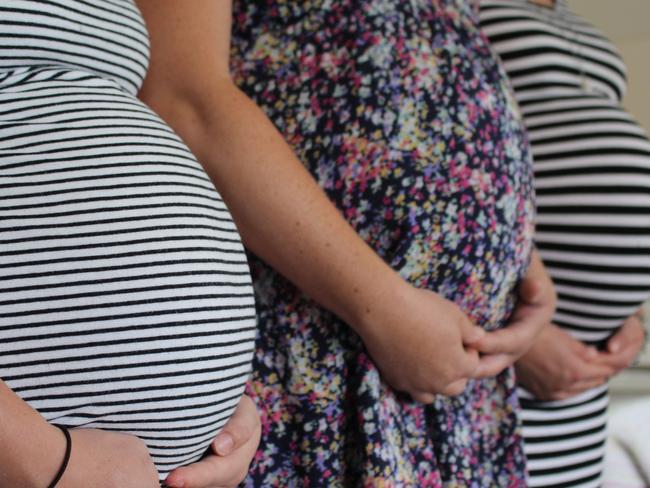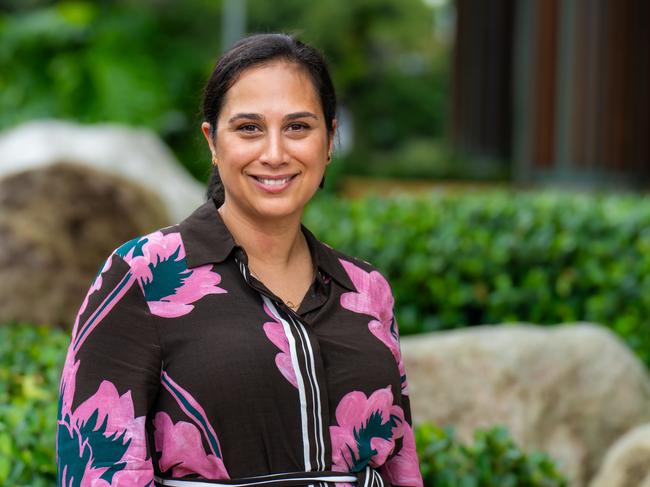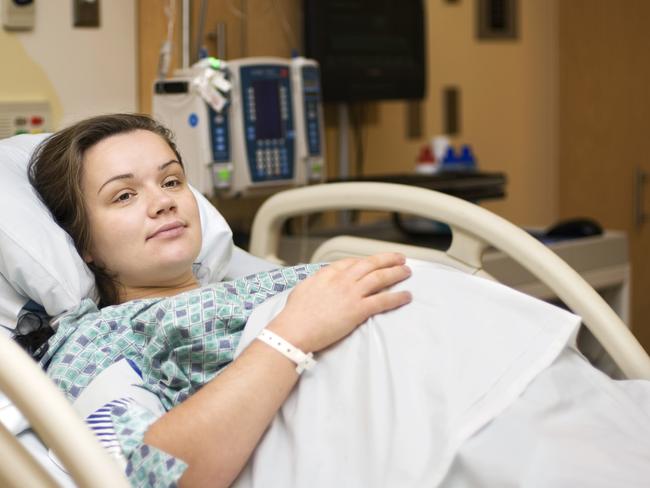How this tool is showing doctors how to help women suffering birth trauma
One in three mums will experience psychological trauma after giving birth. But a new tool is changing the way doctors deal with it. This is how.
Pregnancy
Don't miss out on the headlines from Pregnancy. Followed categories will be added to My News.
One in three Australian mums suffer psychological trauma from childbirth, but experts say there is hope if it is identified early and compassionately managed.
Victorian specialist anaesthetist Priya Rao will present a framework for her colleagues, along with a post-delivery ‘check in’ tool called PILAR, at an international scientific conference in Queensland on Tuesday.
The acronym stands for Preparation, Introduction, Listening, Apology and Reassurance.
Dr Rao said it was designed as a guide for anaesthetists to provide patients a safe space to process their birth experience, address potential trauma early and access further resources to support recovery.
She said anaesthetists are well placed to assist with psychological birth trauma, “as we are often present in the chaotic, unplanned emergency environments that can be linked with increased emotional distress”.

Dr Rao said crisis resource management training was well-established in anaesthesia education, and its principles were applicable to establishing psychologically safe environments for patients.
Anaesthetists, she said, are trained to be calm in a crisis by being the “one voice” where they take control and quieten the room; slow it down.
“It’s a skill and it’s hard, but as anaesthetists we need to practice it. We might not get it right every time,” she said.
Dr Rao noted that while birth trauma has long existed, awareness is now growing because of patient feedback, the medical community, government campaigns and media.

“One of the key first steps is raising awareness of what it is in the medical community, why it matters, and recognition that it’s a genuine issue,” she said.
“There are already existing resources to support learning in this area for professionals in maternity teams such as Birth Trauma Australia (BTA).”
The next important step was to advocate for, and participate in, empowering patients early in their pregnancy journey by providing evidence based, accessible information about how anaesthesia may be involved in their labour and delivery.
Preparing to outline the framework at the 2025 Annual Scientific Meeting of the Australian and New Zealand College of Anaesthetists (ANZCA, Dr Rao emphasised that birth was a universally memorable experience.
“Excellence in non-technical skills such as communication are just as important as high technical standards,” she said.
“It is using simple language and techniques; showing kindness and compassion, caring about and considering birth preferences, being friendly, eye contact and avoiding words with negative connotations like ‘hurt’, ‘sting’ or ‘pain’ because sometimes that’s the only word a patient hears.”

Dr Rao acknowledged that no one intends to not communicate well or not give the patient a good experience.
“But it does require mindfulness, it needs to be in the front of the mind and we need to be able to ensure we are role modelling this for the team.”
Dr Rao developed the tool with co-authors Amy Dawes, who is the chief executive of BTA, a national advocacy group supporting those who have suffered birth trauma, and Dr Davina Taylor, a specialist pain management nurse practitioner in Victoria.
They created the PILAR check in tool to help anaesthetists support patients immediately after suspected birth trauma. Early feedback, they said, suggests its potential to significantly improve post-birth trauma care.
“What’s needed now is collaboration,” Dr Rao said. “We need to work together as obstetric teams across Australia and New Zealand and share resources so that we can all learn to provide care that is psychologically safe.
“Anaesthetists are in a unique position to offer support not only for physical pain, but also emotional distress. Our role goes beyond just performing procedures and facilitating delivery; we can and should contribute to reducing negative experiences associated with childbirth.”
The reporter attended the ANZCA scientific meeting as a guest of the conference.
Originally published as How this tool is showing doctors how to help women suffering birth trauma




